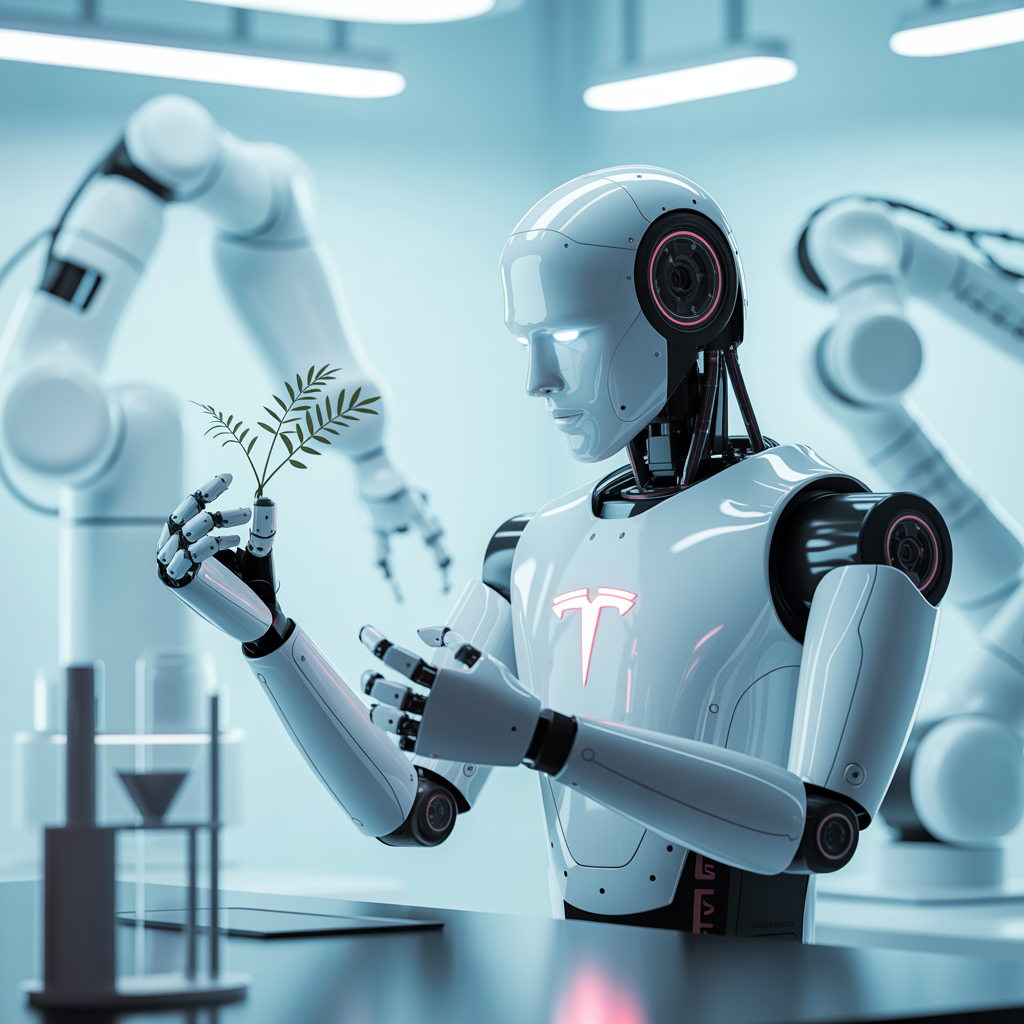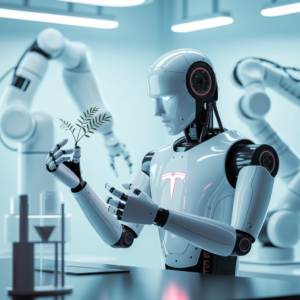By Gudstory Org AI News (May 24, 2025)
Tesla Optimus: Pioneering the Future of Humanoid Robotics
Tesla’s Optimus robot is rapidly gaining attention as one of the most revolutionary tech initiatives of the modern era. Led by Elon Musk, this cutting-edge project merges artificial intelligence with robotics, offering a tantalizing vision of a world where machines may soon integrate seamlessly into our daily routines and workplaces.
Introducing Tesla Optimus: The Dawn of Intelligent Human-Like Robots
Also referred to as the Tesla Bot, Optimus is a life-sized, two-legged robot designed to handle tasks traditionally done by humans. Measuring around 5 feet 8 inches in height and weighing approximately 125 pounds, the third-generation Optimus (Gen 3) highlights significant strides in AI, mechanical engineering, and real-world application.
Unlike traditional industrial robots limited to repetitive functions, Optimus incorporates the same AI backbone as Tesla’s autonomous driving technology, granting it a high level of adaptability and decision-making ability.
Tesla Optimus Features: What This Robot Can Actually Do
With each new iteration, Optimus showcases expanded capabilities, pointing toward a future where robots become indispensable helpers both at home and in industrial settings.
Home Applications:
-
Precisely folding laundry
-
Assisting with meal preparation
-
Cleaning and organizing interiors
-
Pouring beverages and handling bar tasks
-
Walking over uneven ground with balance
Industrial Integration:
-
Supporting tasks on Tesla’s assembly lines
-
Managing repetitive operations in manufacturing
-
Handling objects up to 45 pounds
-
Performing complex hand and arm movements with over 20 points of articulation
AI Interaction and Learning:
-
Understanding and acting on voice commands
-
Recognizing and manipulating real-world objects
-
Learning activities by observing humans
-
Adjusting behavior based on new or changing surroundings
Cost and Availability: When Can You Get One?
A frequent question surrounding Optimus is its expected price. Elon Musk has indicated that mass production could eventually drive the cost down to around $20,000–$30,000. However, early units will likely be more expensive due to limited availability and development costs.
Although Tesla hasn’t confirmed an official launch date, pilot production could begin as early as late 2025. Wider consumer access might follow between 2026 and 2027. At this point, pre-orders are not open, but announcements are anticipated once production milestones are met.
Gen 3 vs. Gen 2: What’s New?
The leap from Optimus Gen 2 to Gen 3 marks notable advancements in functionality and design. The latest version introduces:
-
Improved hand control and fine motor skills
-
Enhanced balance and terrain adaptability
-
Faster and smarter AI processing
-
More natural human-like interaction
-
Better energy efficiency and longer operating time
These refinements bring Tesla closer to its vision of creating a fully autonomous assistant that can operate safely and intelligently alongside humans.
The Competitive Landscape: Tesla vs. Other Humanoid Robotics Leaders
Tesla is entering an increasingly competitive field. Its primary rival, Boston Dynamics, is known for its agile Atlas robot, which emphasizes advanced movement capabilities. In contrast, Tesla is prioritizing practical, scalable solutions for real-world environments.
Other companies like Figure AI and Unitree Robotics are also making headway, employing diverse technologies to reach similar goals. The global race to dominate the humanoid robotics market is clearly heating up.
A Strategic Asset: Tesla Optimus and Investor Interest
For Tesla shareholders, Optimus represents more than an experimental venture—it could become a game-changing business segment. Analysts, including those at Morgan Stanley, have projected that Tesla’s robotics arm could eventually outshine its vehicle division in value, potentially achieving hundreds of billions in market capitalization.
Real-World Applications and Social Impact
Beyond innovation, Optimus may help address labor gaps in several sectors. Whether in elder care, manufacturing, or logistics, its ability to perform monotonous or risky tasks could relieve pressure on the human workforce while enhancing operational efficiency.
In fact, early versions are already being trialed in Tesla’s own facilities, working alongside employees—a concrete step toward mainstream deployment.
Overcoming Skepticism: Is Optimus for Real?
While some critics have dismissed Optimus as overly ambitious or promotional, ongoing progress tells a different story. Continued development, testing, and investment suggest that Tesla is committed to turning its vision into a functional, scalable product.
Public demos and technical updates point to meaningful advances, reinforcing the belief that Optimus is more than a concept—it’s an imminent reality.
Looking Ahead: A Robotic Revolution in the Making
Tesla Optimus isn’t just a bold experiment—it represents a shift in how we think about automation and human-machine collaboration. As development pushes forward in 2025 and beyond, Optimus could become a cornerstone of daily life and industrial operations.
For investors, tech followers, and futurists alike, keeping an eye on Optimus means staying ahead of a potential robotics revolution poised to redefine the modern world.


